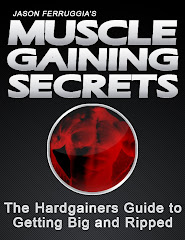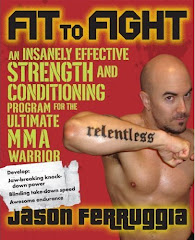
Why is it that almost everyone you see working out in the gym does high volume bodypart splits? Today is Monday and in just about every gym in America that means it’s chest day. Tomorrow is back, Thursday is legs and Friday is arms…or something like that, I guess.
Why the lack of variety or rational thought? What is the need for all that training volume?
You need to understand that most forms of training have just been passed down for decades from one generation to the next, without the inclusion of rational thought. Sometime in the 60’s, sensible training programs started becoming less and less prevalent with the rapidly growing usage of anabolic steroids.
In the days of old, men like Steve Reeves and Paul Anderson trained with far more sensible, lower volume programs but these started to disappear during the 60’s. By the time Arnold got to Gold’s Gym in Venice for the first time, high volume, bodypart splits were the widely accepted way for everyone to train for size and strength.
This type of training is not based on deductive reasoning but just on the fact that “it’s what everyone else is doing.” The proponents of these training methods will always blindly tell you that “higher volume training is needed for hypertrophy gains.” Says who? I can tell you for a fact that the University of Chicago isn’t wasting time examining the effects of Jay Cutler’s marathon workouts. There are no studies saying that you need 8-12 sets per bodypart to grow. In fact there are studies that show the opposite; that one set is just as effective as three.
The proponents of this type of training will also tell you that higher volume training is associated with higher levels of growth hormone secretion. What they don’t tell you is that the level of GH increase is not enough to make any difference at all. In fact, almost anything you do elevates GH. Extreme temperatures elevate GH but my biceps don’t get bigger every time I take a shower. The increased GH secretion from training is so minimal that it is not enough to make the slightest difference whatsoever.
For the drug free lifter who does not possess muscle building genetics quite up to par with the Austrian Oak, training this way is a huge mistake. Not only does it drain your amino acid pool and glycogen stores but it dramatically enhances your recovery time between workouts. If you do 8-12 sets for chest on Monday you can not recover from that workout and be able to train again for seven days. So you are only getting one growth stimulus per week or fifty two per year. Now if you reduce your volume to the point where you can recover faster and more efficiently without draining your amino acid pool and glycogen stores so greatly, you can train bodyparts twice per week instead of once. Now instead of 52 growth stimulating workouts per year for each bodypart, you can now do 104. In fact, if your volume is kept low you can even get away with training bodyparts three times a week in certain situations. Now, which do you think will be more effective; 156 growth stimulating workouts per year or 52?
To train more often you absolutely have to lower your training volume. The total sets per workout should be kept low and the total sets per exercise should be even lower. There is no need to hit four sets of incline presses, flat bench presses and decline presses for your chest workout. Doing that is a form of neuroses; you think that you need to hit every angle and do and endless amount of sets to stimulate every last muscle fiber, but this is simply not the case.
The reason these training programs remain popular is because nobody wants to be told that they are wrong. Admitting your mistakes is something many people can’t do. It is why when something radically different is proposed, the high volume proponents get upset and offended. Nobody likes to have their ego bruised so they keep on doing and promoting the same old high volume workouts that they always have.
That’s fine, let them continue to do what they choose; personally I have way more important things to do than spend all of my waking hours in the gym. If I can get better results in a fraction of the time I will choose that option every time.
Cut your volume down, up your weights and intensity and get ready for the “what are you on” questions to start rolling in.
For fast muscle building workouts ==> MuscleGainingSecrets.com.





.jpg)
.jpg)











